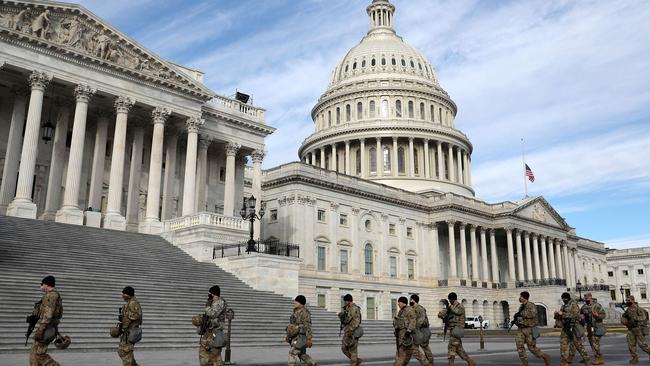2020 is over but troubles aren’t behind us
Hopes of a more normal 2021 got off to a rocky start after the storming of the US Capitol building.

In March last year Scott Morrison said we could face six months of disturbance from COVID restrictions. It will be 10 months next week amid the prospect of further lockdowns, whack-a-mole state border closures, mask mandates and a bewildering array of frequently changing rules to keep businesses “COVID-safe”.
If the vaccines aren’t sufficiently effective, expect 2021 to look very much like 2020 except with a lot more pain as wage and business subsidy schemes are turned off. JobKeeper, currently $1000 and $650 a fortnight for full- and part-time workers respectively, will cease entirely after March 28. For many businesses, staff will no longer be viable.
Even if restrictions are lifted quickly and the economy seemingly recovers, the balance of risks and rewards in the economy will have permanently shifted. For a generation of young people, the public sector has become a more desirable place to work. That has obvious implications for the level of “risk taking” in the economy, the importance of which senior Treasury and Reserve Bank official frequently stress.
The Economist last week estimated the global cost of the pandemic would reach $US10.3 trillion by the end of this year in terms of forgone income. Such aggregates paper over the wildly varying impact on different groups and industries.
It’s the sectors most affected by COVID — tourism and hospitality — that have been most disfigured. Airlines can price business class tickets more aggressively because they know few passengers are paying for them themselves, and if they are, they aren’t too fussed about an extra few hundred dollars. Those passengers subsidise economy class tickets.
If rich boomers and multinationals, for instance, slash business class travel budgets to save money or avoid exposure to COVID-19, the economics of the airline industry will be turned on their head. Tourism relies on scale and turnover; the sharp decline in both will mean prices will ratchet up. The pre-2020 $1600 Sydney-to-London domestic return fare will become a historical curiosity. Foreign travel could become, as it once was, a preserve of the wealthy or corporate and bureaucratic elites. The impact on hospitality — cafes and restaurants — is less stark but still profound. Just as Australians are increasingly reluctant to cross state borders for fear of being trapped, hoteliers and restaurant owners will require higher rates of return to compensate for the arbitrary destruction of their revenue whenever “cases” arise.
That means prices in these sectors will rise to compensate owners for the extra risk on top of the reduction in customers foist on them right now by square-metre rules, COVID “marshals” and various other costs imposed by health rules. Workers in these industries — quite reasonably — will want to be better compensated, too, further adding to costs.
Because of my job I’m fortunate enough I can limit my mask wearing to a few minutes of humiliation and discomfort every day or two. Hospitality workers, many who have spent long commutes on trains and buses in masks, then have to wear one for their entire shift as well. Breathing one’s own breath for hours on end isn’t pleasant and probably not especially healthy, either. Ongoing mask mandates will make such work far more tedious, not to mention less lucrative to the extent a smile can generate a tip.
Overwhelmingly, it is younger people for whom 2020 has been a damaging turning point more than inconvenience. They are the ones who typically travel the most in the economy cabin, who work in tourism and hospitality jobs. Even those young adults who have started their professional careers will find they aren’t being promoted as fast as they hoped, given the smaller economy.
And the potential silver lining during a recession of falling asset prices, which might have offered some sort of compensation, hasn’t materialised. On the contrary, expectations that dwelling prices would plunge at the start of the pandemic have proved hopelessly wrong. Rents, which have fallen sharply, especially in the inner-city areas that depended on students, appear to have decoupled from prices as ultra low interest rates encourage borrowing that pushes up prices further.
Making predictions is fraught, especially economic ones; it’s hard enough to know what’s happening now, let alone in the future. But 2020 is also likely to be seen as a year when economies became susceptible to a surge in inflation. Central banks have been frustrated for years about the lack of consumer price growth.
Reading German economist Peter Bernholz’s classic Monetary Regimes and Inflation over the break, I was reminded of how bouts of inflation are fuelled by large budget deficits funded with newly created money. Most Western countries are doing both in spades, certainly more than at any time since World War II. Let’s hope this time is different; the last thing the West needs now is more political destabilisation.




Hopes of a more normal 2021 got off to a rocky start after the storming of the US Capitol building. Even before then, though, it was clear 2020 was a turning point, not an aberration. A new month and year weren’t going to heal the socio-economic wounds left by COVID-19 and our response to it.